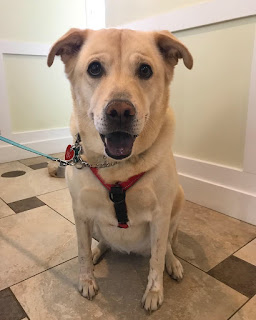Therapy Dogs in Hospice Care
In the 1800s, Florence Nightengale noticed that psychiatric
patients appeared to experience less stress and anxiety when they interacted
with small companion animals. A century later, Sigmund Freud observed that his
dog, Jofi, seemed to indicate which of his patients experienced the most stress
and also helped to encourage open communication. Fast forward to the 1960s, and
psychotherapist Boris Levinson initiated the first formal investigations into
what we now recognize as Animal Assisted Therapy.
Studies have confirmed that positive animal interactions
such as petting a dog or a cat can reduce anxiety, lower blood pressure, and
even reduce sensations of pain. In hospice patients nearing the end of life,
these benefits can play an important role in alleviating feelings of depression
and loneliness while increasing comfort and helping in maintaining more a
positive outlook.
Jasmine works at Wuesthoff Dr. Jey Pillai Center for Hospice
in Rockledge, FL. She’s one of the sweetest girl’s you’ll ever meet, bringing joy
to the world one patient at a time!
Murphy works with ProCare Hospice. Luke has met him at
multiple conferences and can attest to the fact that he’s a very good boy.
Fuzzy Rogers works at Chapters Health in Temple Terrace, FL
(just outside of Tampa, FL). He’s is one of the most calm and obedient dogs Luke
has ever seen. Fuzzy is a good boy and is loved by all his patients.
Buddy is an office dog at Compass Hospice in North
Dallas/Addison, TX. When hospice staff have had a hard and emotional day working
with their patients and families, this happy boy cheers them up by greeting
them as soon as they walk through the door. As you can see, he’s a VERY happy
boy!
If you are interested in learning more about whole body donation and the role that it plays in advancing medical science, you can visit us online at medcure.org. Or, you can call our 24/7 toll free number 866-560-2525 to speak with one of our knowledgeable Donation Coordinators.







Comments
Post a Comment